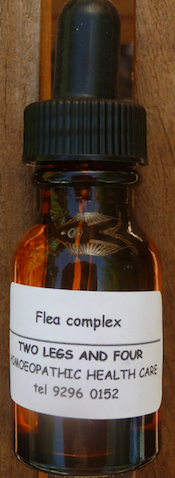Parasites
Parasites
Fleas
Fleas are 'canaries in the coal mine', alerting you to problems in the making in your cat. Fleas consume the toxins, so are doing a valuable job.
Toxins come from commercial cat food and from veterinary medications. This compounds over the years, causing major health issues.
Rather than use the highly toxic and neurotoxic veterinary solutions, it's healthier to get to the root cause of the problem.
The best way to control fleas is to feed your cat a healthy, quality raw meat and bones diet and to use holistic health care, such as homeopathy.
However, in the early stages of the dietary conversion, fleas may be in abundant as the cat de-toxes - at last! Diatomacious earth (food grade NOT garden grade) VERY lightly rubbed into the fur can kill fleas. As can brewers yeast. Just be careful to use them sparingly so the cat doesn't inhale it. Both are safe and effective.
This homeopathic complex is made from several homeopathic remedies in a low potency that are useful in resolving an infestation of fleas in a cat. The vial size is 15ml. It comes with a dropper for ease of use. There is enough that will probably last the life of your cat, as long as you are feeding them appropriately.
The dose is two drops on food, or in the water, daily until the issue is resolved. Then stop.
Worms
Worms are a normal part of a healthy being's digestive tract.
We all have them. Without them, none of us would be here. But they do need to be in the right numbers.
The main reason these worms can explode in their population and create mischief is from the diet. Cats are carnivores and thrive on a diet of quality raw meat and bones. This digests very fast in a healthy cat, never allowing the worm population to get out of hand.
Tapeworms are visible in the fresh stool as small white, moving objects about the size of a grain of rice. They turn yellow when they die. So stool inspection is always a good idea!
Commercial cat food is cooked, is full of plant food (which is highly unsuitable and dangerous for cats) and contains hazardous chemicals mascarading at vitamins, minerals, other nutrients as well as colours, flavours, preservatives. It digests very slowly, allowing the worms to proliferate out of natural balance.
In the early days of a dietary conversion, a cat may expel these excess worms. That's normal and natural. You will also sometimes see tapeworms when your cat's health is below par.
This homeopathic complex is made from several homeopathic remedies in a low potency that are useful in resolving an infestation of worms in a cat. The vial size is 15ml. It comes with a dropper for ease of use. There is enough that will probably last the life of your cat, as long as you are feeding them appropriately.
There are several different worms to target. The most common in an adult is tapeworm. Kittens can suffer with roundworm (which is normally vomited up), but rarely an adult. Ringworm is an infestation on contact, so doesn't affect most cats.
Suggested dose is to add a couple of drops in the food or water, every day. Stop when you see improvement.
Free ebook on understanding why cats are so sick and how you can set about changing that
Subscribe and receive regular emails on restoring and maintaining happy, healthy cats!
PRIVACY POLICY TERMS OF USE DISCLAIMER
©2023 Madeleine innocent. All Rights Reserved


